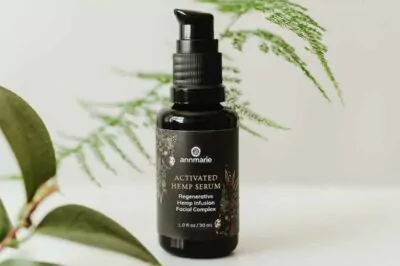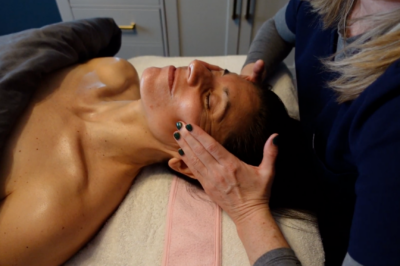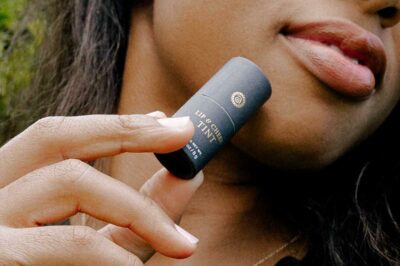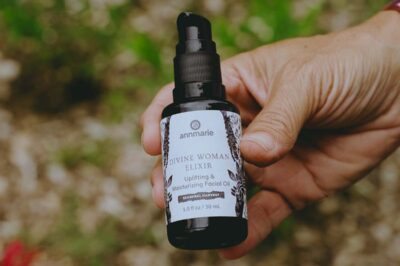Table of Contents[Hide][Show]
One of the things that surprises most people when they start looking into the skin care industry is how little oversight goes into the making of skin care products.
Most of us assume that the FDA or some other government agency regulates what manufacturers can use and what they can’t, but when you start looking into it, you realize that though the FDA has some oversight, they are very limited and allow manufacturers to use just about whatever they want when making products.
Here’s more on where the regulations stand today, and what you need to know to protect yourself and your family.
Because of limits in current laws, manufacturers can put most anything into their cosmetic products.
The FDA Doesn’t Do Much
Though the FDA is responsible for overseeing cosmetics in the U.S., they do surprisingly little to ensure the products we use every day are safe. Consider the following:
- The law says: “Cosmetic products and ingredients are not subject to FDA pre-market approval authority, with the exception of color additives.” That means that unlike drug companies, who must get FDA approval on their products before selling them to the public, cosmetic companies have to go through no such approval process. They do not have to submit their formulations for FDA oversight prior to selling them to us.
- This means that cosmetics are among the least-regulated products on the market.
- Over 80 percent of all ingredients used in cosmetics have not been evaluated for safety by any publicly accountable institution.
- The FDA cannot require companies to conduct pre-market safety studies on cosmetic products or their ingredients.
- The FDA cannot require manufacturers to report cosmetic-related injuries. Such reporting is completely voluntary.
- To change this situation, Congress would have to change the law.
You may wonder, “What about the Cosmetic Ingredient Review (CIR) panel?” This is the expert panel that was formed in 1976 to determine the safety of ingredients. The panel includes a dermatologist, toxicologist, consumer representative and industry scientist who review and assess ingredient safety data. Surely this panel checks all ingredients for safety?
Unfortunately, the CIR is falling short of its large job description. According to the Campaign for Safe Cosmetics, in its more than 30-year history, the panel has reviewed the safety of only 11 percent of the ingredients used in personal care products, and through June of 2008 found only nine that were unsafe for use. The panel also doesn’t look at the effects of long-term exposure to multiple chemicals either, such as what we all experience when using many personal care products over a period of several decades. This is a serious oversight, as was discovered in a new study this year.
Danger of Combined Chemicals
In the summer of 2013, researchers from Texas Tech University found that two chemicals, even at low levels considered to be safe for humans when used alone, could cause cancer when used together.
The scientists treated human prostate cells once a week for six months with arsenic, estrogen, and a combination of both. Most of the tests involved levels of these ingredients considered safe by the Environmental Protection Agency.
Results showed that the combination of the two ingredients was almost twice as likely to cause cancer in prostate cells as opposed to when either ingredient used alone. This was a concerning study since we are exposed to estrogen-like compounds everyday in chemicals like BPA—found in plastics—and even to arsenic every day in cigarette smoke, some drinking water, some chicken meat, some apple juice, some rice, and even from pressure-treated lumber.
More importantly, the research highlights how much we’re lacking studies on combination exposure. Manufacturers use ingredients in their products based on safety data on those ingredients when used alone. But combinations? Our data is nearly non-existent.
Europe Making Changes—What About U.S.?
In the summer of 2013, new cosmetic regulations went into effect in the European Union. Key changes in the regulation included:
- Nanotechnology: The use of extra-small particles in sunscreen and mineral makeup products must now be specified on the label so consumers know what they’re getting. This is important as there has been some concern that super-small particles could penetrate the skin and get into the bloodstream.
- Database: All products and their raw materials will have to be disclosed on a central EU database to ensure consumer safety. This database will contain records of adverse events caused by certain ingredients.
- Safety assessments: The new regulation specifies that particular protocols must be followed during safety assessments, and that toxicology qualification is mandatory.
- Marketing claims: Rules about what manufacturers can say about their products are stricter, with regulators requiring relevant data to back up any claim.
So far in the U.S., no such new regulation is planned. Representatives Edward Markey and Jan Schakowsky proposed the “Safe Cosmetics and Personal Care Products Act” in March 2013, intended to close major loopholes in federal law that allows companies to use ingredients in cosmetics that may damage human health and the environment. For more on this act, see here.
Until this or another change in the law is passed, however, families are on their own to reduce their exposure to potentially harmful chemicals. If you’re not sure where to begin, try these tips:
- Read labels: Start looking at the back of your products. The more ingredients you can pronounce, the better. If you see a lot of parabens, phthalates, sulfates, petroleum products, fragrances, and the like, look for another, safer product.
- Shop at different locations: Most of your healthier and safer products are either in whole foods stores or online.
- Research the company: Many newer companies were started because of the lack of natural and nourishing products out there. Annmarie Gianni Skin Care was one of them. These companies tend to care more about what they put into their products. Research the companies you’re buying from, and find those that you can trust.
- Rate your products: Go to the Skin Deep Database and type in your product, and you’ll discover the Environmental Working Group’s rating for the hazard level of that product. This will give you a good starting point as to which of your current products may not be completely safe.
- Educate yourself: The more you read about cosmetics ingredients, the more you’ll be able to make smart choices. We provide you with a great resource here on this blog, but you can find more information at the Campaign for Safe Cosmetics and Women’s Voices for the Earth.
Are you surprised at the lack of oversight on cosmetic products? Please share your thoughts.
* * *
Sources
Myra Y. Irizarry, “The Evolving Regulatory Landscape of Professional Skin Care Products,” GCI Magazine, May 10, 2013, http://www.gcimagazine.com/marketstrends/segments/skin care/The-Evolving-Regulatory-Landscape-of-Professional-Skin-Care-Products-206931181.html.
John Davis, “Researchers Find Cancer Risks Double When Two Carcinogens Present at ‘Safe’ Levels,” Texas Tech Today, June 28, 2013, http://today.ttu.edu/2013/06/researchers-find-cancer-risks-double-when-two-carcinogens-present-at-safe-levels/.
Andrew McDougall, “New EU cosmetics regulation in place next year: A closer look,” cosmeticsdesign-europe.com, October 11, 2012, http://www.cosmeticsdesign-europe.com/Regulation-Safety/New-EU-cosmetics-regulation-in-place-next-year-A-closer-look.
Andrew McDougall, “ICMAD issues industry response to Safe Cosmetics Act proposal,” cosmeticsdesign.com, May 1, 2013, http://www.cosmeticsdesign.com/Regulation-Safety/ICMAD-issues-industry-response-to-Safe-Cosmetics-Act-proposal.







Leave a Reply